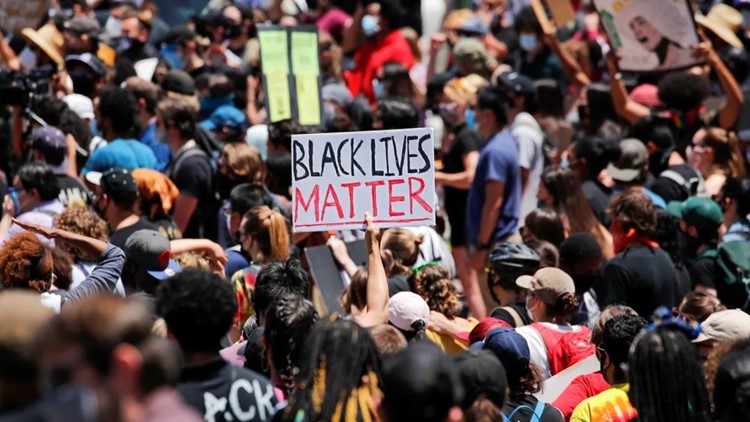CALIFORNIA, USA — Will reparations for Black residents in California become a reality? If not, are they likely to happen anywhere else in the United States?
All eyes are on California, long considered the nation’s test tube for progressive policies, and its pioneering reparations task force, which this week is giving the state Legislature its recommendations for repairing the damage of slavery and racism.
Reparations, a topic steeped in historical and contemporary significance, gained new momentum following the Minneapolis police murder of George Floyd in 2020. That’s when Gov. Gavin Newsom signed a law establishing the first-in-the-nation state task force to study historic and systemic racism and develop recommendations to address it.
After two years of often-intense public hearings, the California Reparations Task Force task voted in May to approve a more than 1,000-page document, including more than 200 recommendations for how to undo centuries of unfair treatment for Black Californians, especially descendants of enslaved people. It recommended California formally apologize for its role in enabling slavery, and for the many tentacles of white supremacy in its history.
It also recommended the state make cash payments to those whose ancestors were enslaved. CalMatters’ reparations calculator, based on economic modeling in the task force’s report, estimates an eligible Black resident who has lived seven decades in California could be owed up to $1.2 million.
Advocates say reparations are not only a matter of justice but a necessary step toward healing deep-seated wounds. Critics counter that reparations are an impractical and divisive concept — questioning the fairness of determining eligibility, the cost, and the potential it would open the floodgates to other aggrieved groups to seek repayment for government-sanctioned harms.
What are reparations?
Reparations programs acknowledge and address harms caused by human rights violations such as slavery, segregation, or the systematic denial of fair housing, education, or employment opportunities.
The United Nations identified five components to an effective reparations plan: restitution, compensation, rehabilitation, satisfaction, and guarantees of non-repetition.
This should restore victims to their original situation before the violation occurred: restoration of liberty, reinstatement of employment, return of property.
This should be provided for any economically assessable damage, loss of earnings, loss of property, loss of economic opportunities, moral damages.
This should include medical and psychological care, legal and social services.
The injured community should feel satisfied with the actions taken. Can include public apologies, sanctions and memorials or commemorations
This should include the cessation of continuing violations, and the promise that it won’t happen again.
Source: United Nations
Compensation could take many forms, according to scholars. They could include direct cash payments, infrastructure investments in historically underserved communities, and vouchers for housing, college or medical insurance. California’s task force also proposed hundreds of policy recommendations falling under such categories as justice and law, voting, education, health, business, and housing.
Was there slavery in California?
Yes. While California did not have large-scale plantations like the Southern states, slavery existed in various forms during California’s early history.
California was not legally a slave state, yet more than 2,000 enslaved people were brought to the state from 1850 to 1860, typically by plantation owners, to work in gold mines, according to the task force. State and local government officials also at times upheld fugitive slave laws.
Who would be eligible for California reparations?
Figuring out who would be eligible for reparations is expected to be a complicated process.
The task force in March 2022 voted to limit potential compensation to descendants of free and enslaved Black people who were in the United States prior to 1900. To qualify a person would have to trace lineage. The reparations panel narrowly rejected a proposal to include recent immigrants. The eligibility debate dominated the task force’s first year of work and highlighted a cultural schism within the Black community.
The task force also voted to recommend the Legislature create a California American Freedmen’s Affairs Agency — an updated version of the Freedmen’s Bureau instituted by the federal government in 1865, after the Civil War, to assist formerly enslaved people. The new agency would help California residents trace their lineage.
Kamilah Moore, chairperson of the task force, said nearly 80% of California’s 2.8 million Black residents would be eligible for reparations.
Some task force members predicted a large percentage of Black Californians would have trouble proving eligibility, including children in the state’s welfare system, incarcerated people and those suffering mental illness or homelessness.
“Our most vulnerable could be left out,” said task force member Cheryl Grills.
Click here to read the full story.
WATCH RELATED: San Diego lawmaker behind law paving the way for slavery reparations in California



